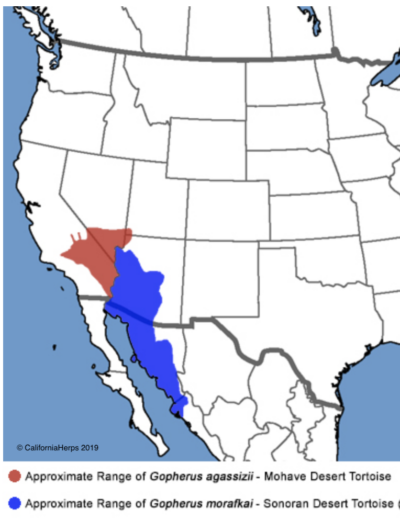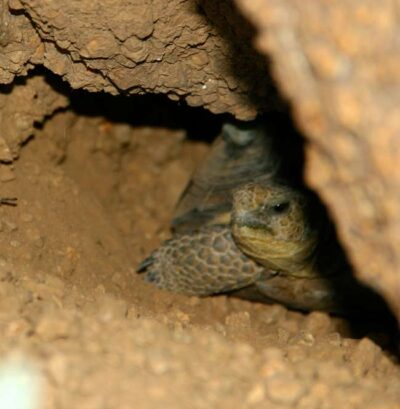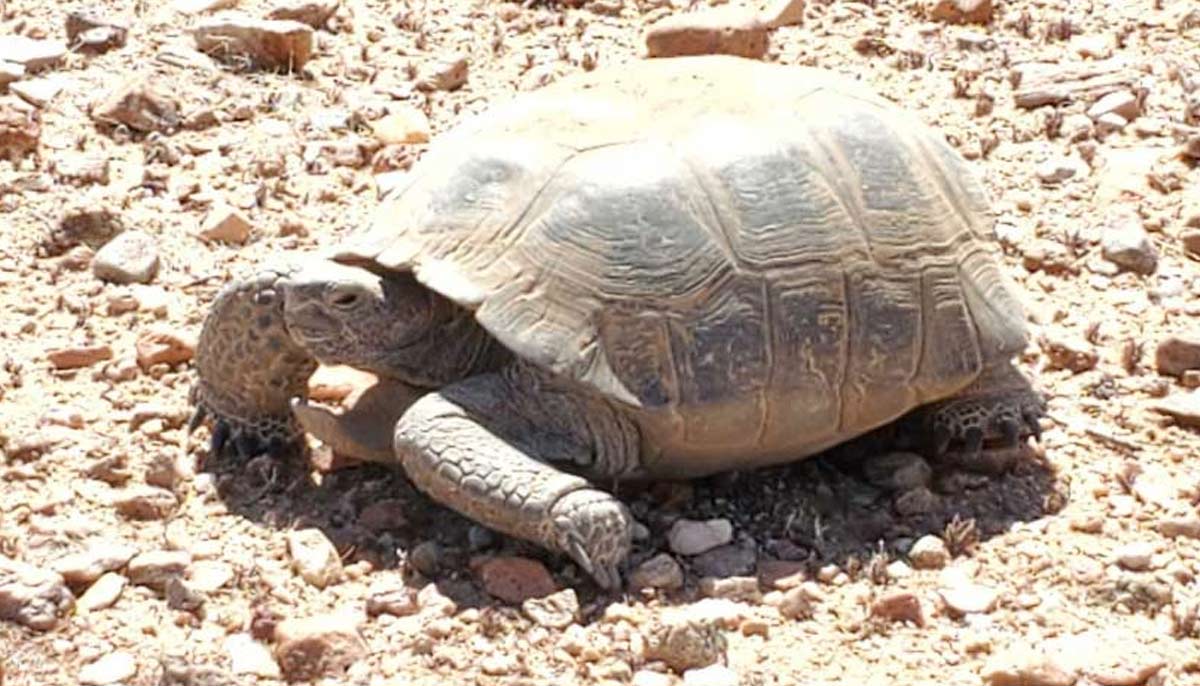MOHAVE DESERT TORTOISE
Gopherus agassizii
 Status: Federally Threatened (those that occur north and west of the Colorado River); CA State Threatened
Status: Federally Threatened (those that occur north and west of the Colorado River); CA State Threatened
Recovery Permit Required for Surveys? No
Range: Southeastern California, southern Nevada, Arizona, and northern Mexico
The Mohave Desert Tortoise is a resident to the southwestern deserts. This species was split from the Sonoran desert tortoise, Gopherus morakfai, which ranges from Southern Nevada and extreme southwest Utah and east through much of western Arizona, south along the Pacific Coast of Mexico to northern Sinaloa (CalHerps).
SummitWest employees have a combined 50+ years of experience surveying for desert tortoise and monitoring during construction projects.
SUITABLE HABITAT
The Mohave desert tortoise is found in many places throughout the Mohave Desert, in open areas as well as those vegetated with desert scrub. While the tortoise may look slow and cumbersome, they have no problem living in areas with hills, rocks and slopes. According to CalHerps, the Mohave tortoise “needs firm ground in order to dig burrows, or rocks to shelter among. In California, it is found in arid sandy or gravelly locations along riverbanks, washes, sandy dunes, alluvial fans, canyon bottoms, desert oases, rocky hillsides, creosote flats and hillsides” (CalHerps)
CHARACTERISTICS
 Per CalHerps, “The desert tortoise is a medium to large, slow-moving, terrestrial desert turtle with a high domed shell composed of large scutes marked with many growth lines, large rear feet, and stocky forelimbs covered with large conical scales. The carapace is unkeeled, with a serrated rear rim” (CalHerps).
Per CalHerps, “The desert tortoise is a medium to large, slow-moving, terrestrial desert turtle with a high domed shell composed of large scutes marked with many growth lines, large rear feet, and stocky forelimbs covered with large conical scales. The carapace is unkeeled, with a serrated rear rim” (CalHerps).
SURVEY SEASON
The guidelines for surveying for desert tortoise vary depending on if the surveys are presence/absence, with no handling or relocation, or if handling and relocation are required.
For presence/absence surveys, approval to survey is granted on a case-by-case basis, but prior experience needs to be demonstrated.
To handle, process, or relocate desert tortoise, also known as an “Authorized Biologist”, one must meet the requirements set forth by the USFWS found here.


